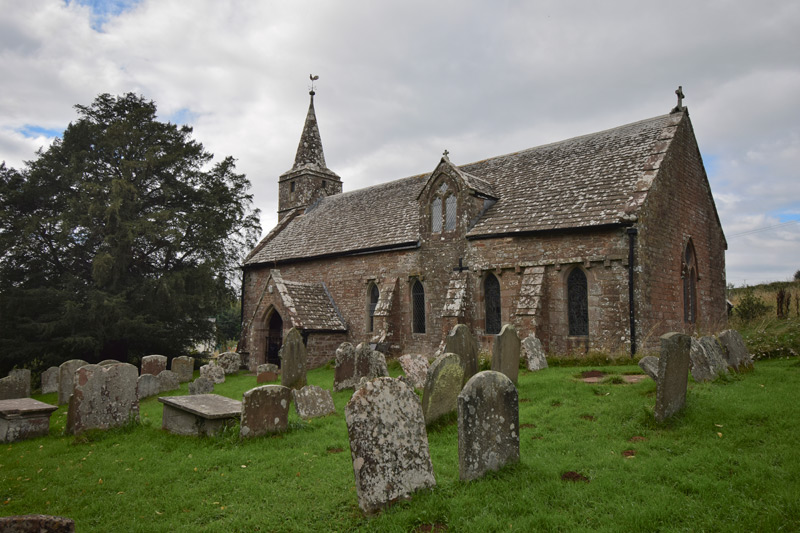When we visited the church of St Mary the Virgin, at Welsh Newton in Herefordshire, I was immediately struck by two things. Firstly, the amount of lichen that covered the church, the gravestones and all the other stone surfaces in the vicinity was prodigious. Secondly, the tower and spire, apparently thirteenth century, are the smallest that I've seen from that period.
A third memorable feature became visible when we went inside - a stone rood screen of c.1330 - examples made of stone in parish churches are rare. Its existence also explained the fourteenth century dormer window designed to illuminate the rood (cross). One other notable feature is to be found in the graveyard: it is the tomb slab of St John Kemble who was executed in 1679.
photo © T. Boughen Camera: Nikon D5300















